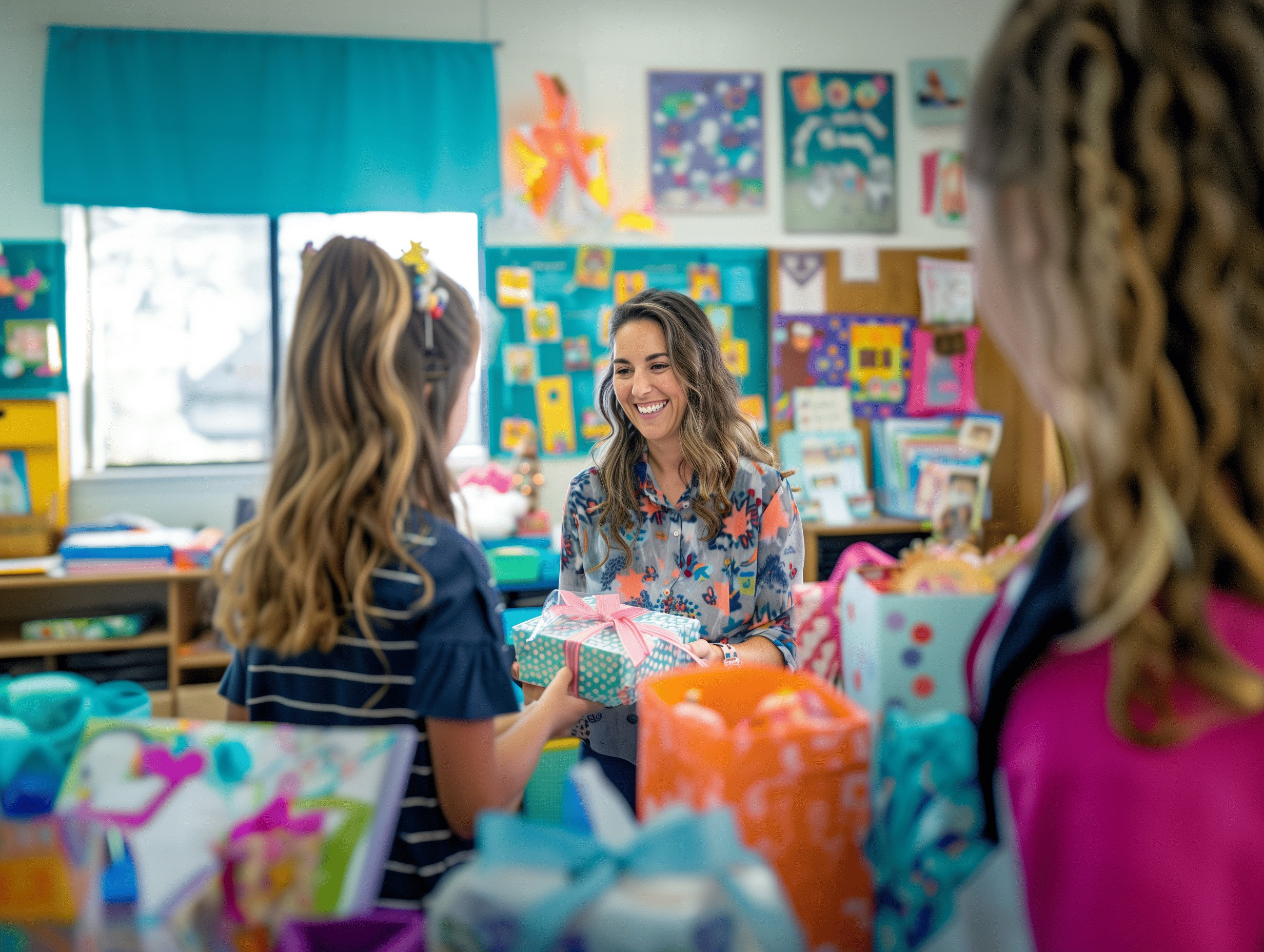Teacher's Workshop |
|
Not if you accept the fact that you have enormous power to influence student behavior. Here's how you can help your students choose positive behavior. by Linda Albert I'll always remember Megan. She usually came to class late, talked out of turn, got out of her seat whenever she wanted, and rarely turned in assignments. Whenever I tried to talk to her, she'd ask indignantly, "What did I do?" At some point in your teaching career, you've probably had a Megan, the student who tests and challenges you and causes you to ask yourself'What do I do now? I discussed Megan with my colleagues, who suggested that I look inside my classroom to see if something was happening that influenced her to be uncooperative. The more I examined what was taking place in the classroom, the more I realized that I needed to help Megan make better behavioral choices. I developed a discipline program based on my experiences with students, on ideas I've exchanged with many teachers throughout the country, and on the most up-to-date theories and research on student behavior. Cooperative Discipline enables teachers to apply specific strategies to reach individual students. One important tip to remember is that students choose their behavior, and we have power to influence'not control'their choices. The change starts with the teacher; we need to learn how to interact with students so they'll want to choose appropriate behavior and comply with the rules. Here's what you do: Identify the student's behavior Usually, kids misbehave because they want something'to be the center of attention or to boss others around, for example. The first step in Cooperative Discipline is to pinpoint exactly what the student wants when he misbehaves. This approach to categorizing behavior was first proposed by psychologist Rudolf Dreikurs. Generally, students misbehave to reach one of these four goals. Attention: Some students choose misbehavior to get extra attention. They want to be center stage, so they distract teachers and classmates to gain an audience and special recognition. Some typical behaviors include making noises, using foul language, and creating unnecessary interruptions during class time. Power: Some students want to be the boss'of them selves, the teacher, and sometimes the whole class. They want everything to be done their way. At the very least, they want to show others that "you can't push me around." These students aren't likely to comply with classroom rules or teacher requests. They will challenge and argue with teachers until they think they've had the "last word." Revenge: Some students want to lash out at their teachers or classmates to get even for real or imagined hurts. Students may sometimes threaten physical harm or get indirect physical revenge by breaking, damaging, or stealing. They also may try to manipulate you into feeling hurt or guilty. Avoidance of failure: Some students feel inadequate because they believe they can't live up to their own, their family's, or their teacher's expectations. To compensate, they behave in ways that make them appear inadequate, by procrastinating, not completing their work, or pretending to have a disability. These students hope that everyone will back off and leave them alone so they won't have to face the fact that they aren't performing up to their potential. Does every misbehavior really have one of these four goals? Of course not. No theory, no matter how complete, applies to every situation 100 percent of the time; yet these four goals can help you classify the misbehaviors more than 90 percent of the time. Deal with the misbehavior immediately After you have categorized the misbehavior, you'll want to choose specific interventions for dealing with that type of behavior. Give these strategies a try: Attention:
Power:
Revenge:
Avoidance of failure:
Provide some encouragement The trouble with many discipline programs is that they give teachers strategies for addressing misbehavior, but don't show them how to keep the misbehavior from recurring. Cooperative Discipline assumes that students will misbehave again if the strategies aren't accompanied by encouragement techniques that build self-esteem and strengthen the student's motivation to cooperate and learn. Encouragement techniques are neither time-consuming nor difficult to learn. Commit to using them daily and your students will feel like valuable members of the classroom. Strategies for encouraging students fall into three categories: Capable: Students need to feel capable of completing their work in a satisfactory manner. How?
Connect: Students need to believe they can develop positive relationships with teachers and classmates. How?
Contribute: Students need to contribute to the welfare of the class so they feel like they make a difference. How?
Students feel good about themselves'and about their ability to succeed in school'when they believe they're capable learners who can connect in positive ways with classmates and teachers. They'll also feel good about themselves when they find ways to contribute to the class and to the school. Keep in mind that encouragement strategies not only prevent misbehavior but are being used successfully as violence and gang prevention measures. Making partners along the way Cooperative Discipline is a process that promotes collaboration. Building a strong partnership with students and parents is essential to maintain a positive discipline program that works. Start by creating partnerships with your students. One way to involve them is to get their help in developing a classroom code of conduct. They'll be more interested in keeping and enforcing the rules because they helped develop them. Another strategy is to teach students about the three C's of encouragement (capable, connect, and contribute) and help them find ways they can encourage themselves and their classmates. Set the stage for effective parent partnerships. Have your school administrator invite parents to a meeting to get their input on writing a code of conduct. When you conference with parents about a problem you're having with their child, limit your complaints to three or four misbehaviors. Discuss with parents which intervention and encouragement strategies you'll be using to help their child choose more positive behavior. Send a clear message that you want parents to participate in the disciplining of their children. Reminding parents that "you can't always do it alone" sometimes will get you the support you want and need. A Potpourri of ideas to get Students on Your Side
Linda Albert, author of the Cooperative Discipline program, is an educator and lecturer internationally known for her work with teachers and parents. She has written columns for WorkingMother and Family magazines and has made radio and television appearances on several news programs. Dr. Albert lives in Tampa, Fla. |



